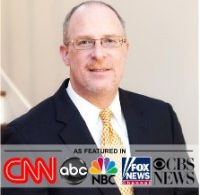
I thought it would be inappropriate to continue my “Hurricane Harvey and Captive Insurance” series while Florida was dealing with Hurricane Irma. But now that the worst is over, I wanted to continue my train of thought. Last week, I showed that controlling the claims process is an incredible advantage to owning a captive. This is especially beneficial during a large catastrophe because your captive won’t be flooded with non-parent company claims, slowing down the settlement process.
This week, I want to turn to the ability to control the contract drafting process. Insurance companies are the sole party drafting insurance policies – whose formation and interpretation is governed by contract law. Several interpretive presumptions (the adhesion contract doctrine and the presumption in favor for finding coverage) are supposed to prevent a bias that favors insurance companies. But these concepts must be applied by a judge – and there is never any guarantee he or she will rule in your favor. It’s best to control the actual drafting process to make sure the policy contains the desired terms and conditions.
The following story best illustrates this benefit. Several years ago, we were talking with a potential captive client that had losses due to Hurricane Sandy. They filed a large loss of income claim with their property insurer due to the storm. The insurer responded with a counter-offer that was 10% of the client’s submitted damages. The reason for the difference? The insurer argued the loss of income was caused by cessation of utilities, which, according to the policy, had a maximum payout equal to the insurer’s counter-offer.
At this point, the client has two options: he can accept the counter-offer or sue the insurer. The former would mean a fairly quick resolution but for a far lower dollar amount while the latter could take years. And a lawsuit would cost money – this with the client already in a weakened financial position.
Had the insured formed a captive, he could have drafted the policy himself, giving him maximum control of terms, conditions and overall language. He could have written a simple loss of income policy with broad terms and conditions that would have covered the loss. Or he could have written a difference in conditions policy for his commercial coverage that could have provided coverage.
These are just two of the possible scenarios. More are possible.
Questions? Contact Hale


















Recent Comments